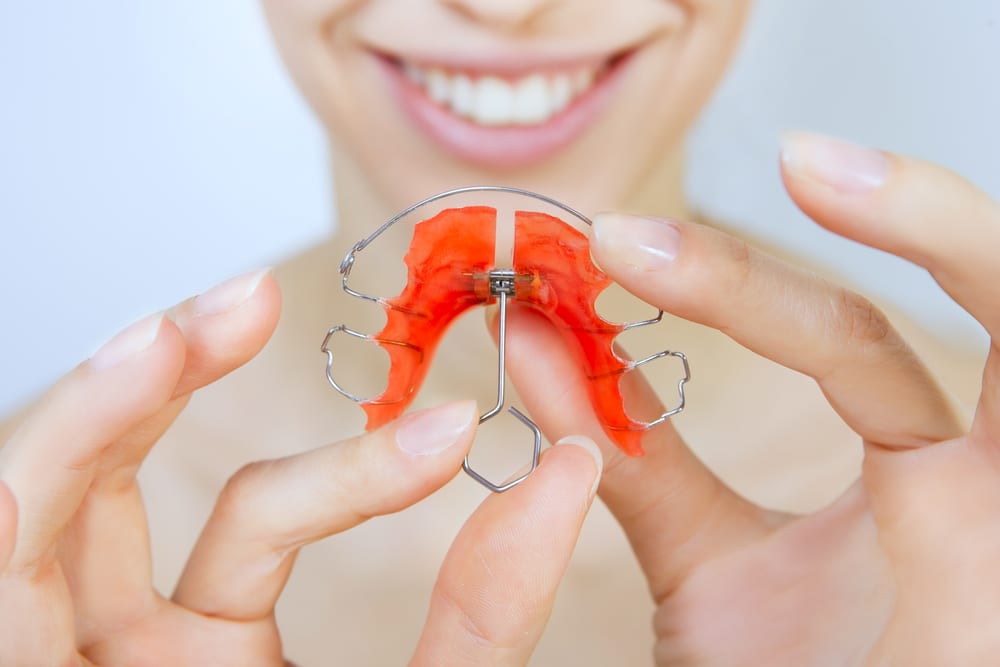
Choosing the Right Retainer
After your orthodontic treatment is completed, you’ll have a beautiful smile that’s worth showing off and a bite where it needs to be. That’s something to definitely celebrate, however just because the braces are gone for good doesn’t mean you’re completely done with permanently correcting your smile.
Your retainer is what keeps your teeth and all that orthodontic work in place, and although retainers may have been bulky and speech-impairing in the past it’s important for parents to know that dental science has fortunately come a very long way. Today there are several retainer options, and each of these options are more comfortable and generally less visible.
Where to Begin With Retainer Selection
Some of the initial questions you should ask yourself when beginning your retainer selection include the following:
- How much time per day are you willing to utilize for retainer use and care?
- Just how visible do you want your retainer to be?
- Do you want something permanent or a removable option?
These questions are important because ultimately orthodontic patients will have to choose from using a retainer for several years or even indefinitely, which is why your retainer type is so crucial.
Retainer Types
Retainers come in a few different styles, and each of these options help suit people with certain appearance and style preferences. There are three basic categories that you can choose from in terms of retainer types, including:
- Hawley Retainers — This type of retainer is very widely recognized, and it’s sometimes referred to as a wire retainer. This type of retainer has been around for a long time and is an option that many orthodontists will utilize. They consist of a molded acrylic arch and wire that’s a perfect fit for the patient’s newly corrected smile. They help hold teeth in place and can also be adjusted if necessary. They are also removable retainers, so patients must take proper care of them on a daily basis.
- Clear Retainers — This type of retainer has become very popular in recent years, and this is because they’re nearly invisible. The technology has improved a lot within the past decade or so, and clear retainers are a testament to these industry advancements in plastics. They’re made from clear plastic, and they are also perfectly customized to an individual’s corrected smile. Since these retainers are clear, they’re ultimately a lot harder to notice. Clear retainers are also considered to be the least durable, although cheaper to replace, and they’re also removable.
- Permanent Retainers — There are a few different types of permanent retainers, including fixed retainers, lingual retainer wire and bonded wire retainers. All of these are considered permanent because only orthodontists can officially remove them, not patients. These retainers are connected to the back of a patient’s teeth, and they firmly hold teeth in place to prevent any potential regressions back to their previous positions. Although these retainers do exist, Dr. Karpac does not utilize them due to the potential for periodontal problems and possible bone loss down the road if worn for an extended period of time. Permanent retainers need to be maintained 3-4 times a year by your dentist and/or hygienist. They need to be flossed daily by the patient. When you glue teeth together such as with a fixed wire behind the teeth, all the teeth function as one, and that puts undo stress on “all” the teeth as a unit when you bite. Teeth were meant to be individual units in their own sockets. Sometimes the fixed permanent retainer breaks and the tooth that broke away from the wire moves away from the wire. So, a new retainer will need to be made or a different type of retainer made to move that tooth back into position. Like all things in life there is no perfect solution here.
Making Your Decision
There are a number of factors that come into play when it comes to deciding which type of retainer is best for you or your child, and it’s important to remember that our office will recommend a specific future retainer path. But no matter what, it’s always important to discuss your options thoroughly.
The following are some of the factors you should think about when choosing your retainer type:
- Effectiveness — All retainer types are generally effective as long as they’re used properly, and this sometimes depends upon an individual patient’s habits. The main example of this pertains to oral hygiene habits and responsibility, because if you think you or your child can’t keep up with the daily teeth cleaning of their own teeth, then a removable retainer is probably the best choice.
- Convenience — This is a factor that means a lot to many patients, and many people want a retainer option that’s convenient for their lifestyle. Many people think that permanent retainers are very convenient because the patient doesn’t have to do too much beyond typical oral hygiene routines, but there is a significant downside if hygiene and maintaining the fixed retainer is minimal.
- Appearance — When appearance is a significant factor for someone, then a clear retainer is probably the best option. Clear retainers are barely noticeable, and permanent retainers are positioned up against the back of your front teeth. Although Hawley retainers are more visible, most patients who wear them will only actually do so when they’re sleeping or relaxing at home in the evening hours.
- Maintenance — Upkeep is always an important factor when it comes to choosing a retainer type, and this is because there is an assortment of issues that can arise when someone doesn’t take care of their retainer. All removable retainers must be cleaned on a daily basis and become a part of the patient’s regular routine, and they also must be kept track of when not in use.
Taking care of your retainer is a big part of ensuring the best overall results to an orthodontic treatment process, and although this stage is post-braces or Line-M-Up™ it’s still very important because it helps secure your results for the rest of the patient’s lifetime.
To learn more about retainer choices and answer any and all orthodontic inquiries, contact us today for more information so we can help ensure you or your child’s perfect, healthy smile!

